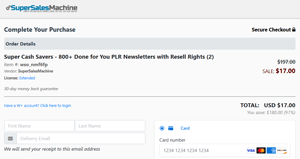Smart Video Marketing is here to change that, showing you how to create videos that captivate, engage, and convert—even if you’ve NEVER recorded anything before.
Traffic Method 6.7 - Leverage Instagram Reels to Share Engaging, Short-form Content
How It Works
Instagram Reels allow you to create short-form, high-impact video content that is perfect for quickly capturing attention. These bite-sized videos are designed for users who are on-the-go, and Instagram’s algorithm gives them a major visibility boost. When you upload a Reel, it’s shown to your followers and can be discovered by a much broader audience through the Explore feed.
The format itself encourages creativity—it’s simple, fun, and very engaging. With Reels, you can use effects, soundtracks, and text overlays to present value-driven content that leaves a lasting impression. Reels’ quick nature makes it an ideal way to introduce a concept, explain a quick tip, show behind-the-scenes footage, or simply entertain your audience.
Who It Is For
Instagram Reels work well for anyone looking to build a dynamic online presence, especially those who target younger, social-media-savvy audiences. This method is particularly useful for entrepreneurs, influencers, content creators, and small business owners. It’s ideal for extroverts who thrive on video content but can work well for introverts too—after all, you don't have to show your face every time if you prefer focusing on visuals or voiceovers.
Whether you’re in fitness, fashion, beauty, food, or any other niche, Reels can help you build brand awareness and drive engagement. Beginners can start by recording simple, authentic videos—there’s no need for extensive editing or expensive equipment. Just aim to deliver value quickly and keep things interesting to hold the viewer’s attention for the entire duration of the Reel.
How Much Time Is Required
Creating and posting Reels doesn’t have to take up a lot of time. Typically, you can film, edit, and upload a Reel in less than 30 minutes, depending on the complexity. A well-thought-out Reel can be completed in 15-30 minutes for preparation, with editing time lasting another 10–15 minutes. Since Instagram tends to prioritize Reels on the platform, spending just a little time on each post could result in large amounts of organic reach.
If you’re aiming to create multiple Reels weekly, it’s smart to batch create content. Plan 5–10 short videos at once so you can spread them out over the course of days or weeks.
What Tools or Resources Are Required
- Instagram Account: You’ll need a personal or business Instagram profile to post Reels.
- Smartphone or Camera: You don’t need anything fancy—a good smartphone camera can do the trick.
- Video Editing Apps: While Instagram provides in-app editing tools, apps like InShot, Adobe Rush, or CapCut offer even more features like advanced filters or transitions if you prefer to use additional effects.
- Strong Internet Connection: Fast internet helps ensure your video uploads without issues.
- Creativity and a Concept: Reels are all about creativity! You should come up with exciting ideas that reflect your personal brand or message. You may also want to plan captions, effects, or overlays in advance.
Step-by-Step Process Guide
1. Brainstorm Your Content Ideas
What do you want to share? It could be something educational, entertaining, a tutorial, or something that shows behind the scenes of your business. Make sure it aligns with your overall strategy and connects with your audience's interests.
2. Set Up Your Filming Area
Ensure that your space is well-lit. Natural light works best, but you can also use ring lights or other light sources to improve the video quality. If you're filming outdoors, take advantage of the sunlight!
3. Shoot the Video
Film the content in short clips—Instagram Reels allows you to stitch several clips together, so no need to do everything in one take. Focus on quality but don’t stress about perfection; authenticity goes a long way!
4. Edit Your Reel
Use Instagram's native editing tools or external apps to add text, effects, and music. Trim excess footage, add transitions between clips, and tweak audio if needed to create a smooth flow that draws viewers in.
5. Write a Captivating Caption
The caption should complement the video. Ask questions to drive engagement, or use the caption space to include a call-to-action like “Follow for more tips,” or “Tag a friend who needs to see this!”
6. Post Your Reel
Share it with your followers! If you’re aiming for maximum reach, use relevant and trending hashtags, tag other users when applicable, and share the post across other platforms like Facebook, your Instagram Stories, or even a link on your bio to drive more traffic.
Examples of How to Use This Method
Example 1 - A Fitness Coach Sharing Quick Workouts
The coach creates 30-second Reels with simple at-home workouts—e.g., "5-Minute Ab Routine." By showing fast, practical exercises, viewers can easily follow along. They finish with a call-to-action to visit the bio link for more in-depth tutorials.
Example 2 - A Makeup Artist Showing Transformation
The artist films a fast-paced Reel showing a “Before & After” transformation using makeup products. In the caption, they share product links and encourage viewers to comment on their favorite beauty items.
Example 3 - A Food Blogger Giving Recipe Tips
The food blogger shares a 15-second Reel on how to make a delicious dessert. They use a catchy background song, quick transitions between steps, and finished product shots to keep viewers engaged. At the end, the caption invites followers to check the full recipe in the profile link.
Ways to Keep Organized
Staying organized will help you maintain consistency when creating Reels. Create a content calendar to plan and organize your Reels. Set aside specific days to brainstorm, film, and edit, and even schedule your posts ahead of time. You can use scheduling tools like Later or Planoly for automated posting, which gives you more time to focus on creating.
Track Performance using an analytics tool to see what type of content is performing best. Record your findings, like engagement rates, reach, and comments, and adjust your strategy as you go. This helps you understand your audience and refine future content.
Save Your Ideas in a swipe file or note-taking app. Whenever an idea comes to you for a future Reel, jot it down so you don’t forget it. Additionally, organizing footage by topics, or drafts by types of Reels (tutorial, fun, behind the scenes) will make it easier to access when needed.
How to Maximize Effectiveness
Tip 1 - Keep Your Reels Short and Engaging
Remember, Instagram Reels should be fast-paced. Aim for 15 to 30-second videos that quickly get to the point and capture attention within the first 3 seconds. If a video is too long, people might lose interest. Keep it entertaining, intriguing, or helpful. The faster you capture interest, the longer viewers will stay!
Tip 2 - Use Trending Music and Hashtags
Integrating trending music into your Reels can boost visibility. Popular soundtracks often give Reels more organic reach since they tap into the trend, making your content more likely to show up in the Explore section. Pair that with relevant hashtags to increase searchability and get discovered.
Tip 3 - Add Value to Your Reels
Every Reel you post should have a clear takeaway or value for your audience—whether it's an informative tutorial, an entertaining challenge, or behind-the-scenes insight. Ask yourself, “Why should someone watch this?” The more valuable your content is, the more likely people are to follow and share it.
Tip 4 - Post Consistently
Consistency is key when growing your audience. Create a rhythm for posting your Reels—whether that's daily, bi-weekly, or a couple of times a week. Regular uploads give your audience something to look forward to and signal to Instagram that you're an active, engaging content creator.
Tip 5 - Collaborate with Others
Consider collaborating with other content creators, businesses, or influencers. When you tag them in your Reels or work together, you increase the chances of being exposed to their followers. This collaboration could be a shared video or a challenge, allowing both parties to benefit from new exposure.
Metrics for Measuring Success
Metric 1 - View Count
The number of views is an obvious metric and one of the first indicators that your Reels are reaching more people. A high view count means your content has had enough initial attraction to make it past the first round of engagement. Aim for steady growth in views each month.
Metric 2 - Engagement Rate (Likes, Comments, Shares)
Likes, shares, and comments show how engaging your Reels are. These are direct indicators of how well your content resonates with your audience. High engagement means your videos are sparking interest. Aim for a 5-10% engagement rate, depending on your follower count.
Metric 3 - Reach
Reach represents the number of unique users who’ve seen your Reel. It's important because it shows how broad your video’s exposure is. A wider reach means more potential followers and higher visibility on Instagram’s Explore page. Try to increase your reach by 10-15% over time.
Metric 4 - Saves
When people save your Reel to their collection, it shows that they see long-term value in your content. The more saves you get, the higher Instagram's algorithm will prioritize your content. A high saves-to-views ratio indicates you're providing content that people find valuable enough to revisit.
Metric 5 - Follower Growth
After posting your Reels, monitor whether you gain followers. This metric tracks how successful your Reels are in driving people to want more from your account. A steady or spike in new followers after posting can indicate strong content and effective use of Reels in your growth strategy.
Common Challenges and How to Overcome Them
Problem 1 - Low Engagement on Reels
If your Reels are not generating the desired level of engagement, it might be due to lackluster content, poor timing, or insufficient promotion. Solution: Focus on refining your content to make it more engaging. Consider adding interactive elements like questions, challenges, or polls. Also, promote your Reels through Stories or even other social media channels.
Problem 2 - Struggling With Content Ideas
It can be difficult to keep generating fresh ideas for Reels. Solution: Create a content brainstorm file. Look for inspiration in trending topics or check out what other successful accounts in your niche are doing. Keep a pulse on your audience—often, their questions and comments can spark new ideas.
Problem 3 - Difficulty With Video Quality
Struggling to make your Reels look professional on a budget? Solution: Use good lighting and a steady phone mount. Editing apps like InShot or Adobe Rush can make a world of difference in adding extra touches to make your Reels stand out with little effort.
Problem 4 - Not Gaining Enough Reach
When your Reels aren’t getting enough exposure, it might be due to underuse of Instagram’s features. Solution: Maximize reach by using trending music, experimenting with various content types, and leveraging relevant hashtags. Consistently post and engage with your community to boost algorithm preference.
Problem 5 - Time Management Issues
Creating high-quality Reels can be time-consuming. Solution: Try batch filming several Reels at once and schedule them using an Instagram content manager like Later or Planoly. This will give you more time for content creation while still allowing you to post consistently.
How to Scale This Traffic Method
To scale your Instagram Reels strategy, it’s essential to automate certain aspects of content creation and distribution. First, automate your posting schedule using tools like Later or Planoly. You can plan and set your posts in advance, ensuring a consistent flow of content without requiring daily effort. This will give you more time to focus on creating fresh, high-quality videos.
Collaborating with other creators can also help you expand your audience base. By working with influencers or fellow content creators who already have a significant following, you gain access to a new set of potential followers who are interested in your content. Set up partnerships and co-create Reels, challenges, or shoutouts to drive cross-traffic.
Repurposing your Reels into different formats helps maximize their reach. After creating a Reel, use the video to create clips for Stories, share the key moments in Instagram posts, or even turn the video into a YouTube Shorts clip. Additionally, turning Reels into longer blog posts, podcasts, or even eBooks expands their usage.
Finally, as your Reels grow in popularity, consider outsourcing some of the production work. Hiring a videographer or a content editor can take your videos to the next level, while a social media manager could help grow your audience and optimize your scheduling. Outsourcing these tasks allows you to focus on ideation and personal brand-building.
Frequently Asked Questions
Question 1 - How do I come up with fresh content ideas for Reels?
Look for inspiration in trending topics, memes, or popular challenges. Follow industry leaders, check social media hashtags, or review what your audience is asking about. Keep a list of ideas in your phone to stay organized and always have something to create.
Question 2 - How can I improve the quality of my Reels without a fancy camera?
Good lighting is your best friend! Natural daylight works wonders, or you can invest in an affordable ring light. A tripod or phone stand helps keep your camera steady, ensuring smooth, professional-looking shots. Focus on clean, crisp audio, too—use your phone’s mic or invest in an affordable lapel mic.
Question 3 - How do I make my Reels stand out among millions of other posts?
Creativity is key! Try something different by incorporating humor, a unique perspective, or an interactive call-to-action. Make your Reels engaging within the first 3-5 seconds to hook the viewer and encourage them to watch to the end. A strong beginning can make a big difference!
Question 4 - Should I focus on educating, entertaining, or both in my Reels?
Ideally, aim for a balance. Short-form videos should either educate, entertain, or inspire—often, combining those will produce the best results. Give your audience value, whether that’s a quick tip, behind-the-scenes glimpse, or humorous take on a trending subject.
Question 5 - Can I use the same Reel multiple times on Instagram?
Yes, absolutely! Instagram’s algorithm tends to favor fresh content, but you can repurpose content in different formats or from different angles to reach varying audiences. Feel free to share the same Reel again after some time—just make sure to make minor updates, like a new caption or hashtags.
Question 6 - Should I use trending music even if it's not directly related to my content?
Use trending music when it adds to the experience or vibe of your Reel, but don't use it for the sake of trends if it doesn’t match your message. Authenticity is vital on social platforms, and blending trends with your unique style will resonate better with viewers.
Summary
Instagram Reels are a powerful tool for sharing short-form, engaging content that can rapidly increase your reach and foster a deeper connection with your audience. Whether you’re teaching, entertaining, or showcasing your brand, Reels provide a fun and dynamic way to share your message.
To scale this method, aim for consistency in your posting schedule, partner up with others to expand your exposure, and consider repurposing your content to increase its lifespan. Don’t forget to monitor your performance through metrics, adjust your strategies over time, and always be open to experimenting with new creative ideas.
Reels can become a cornerstone of your traffic strategy when approached with a mix of creativity, consistency, and strategy—so start creating, stay consistent, and watch your reach soar!
You'll receive training guides in plain text, word doc and pdf format with personal PLR worth $197
 Whether you’re an internet marketer, small business owner, content creator, or even someone brand new to the online world, Free Traffic for Newbies is the solution you’ve been waiting for!
Whether you’re an internet marketer, small business owner, content creator, or even someone brand new to the online world, Free Traffic for Newbies is the solution you’ve been waiting for! ![]() 80+ FREE traffic generation methods condensed down into 8 modules arranged from easiest to hardest, ensuring steady progress without feeling overwhelmed.
80+ FREE traffic generation methods condensed down into 8 modules arranged from easiest to hardest, ensuring steady progress without feeling overwhelmed. ![]() Quick-Start beginner-friendly methods anyone can follow that deliver traffic in 24-hours or less — no complicated tech skills required!
Quick-Start beginner-friendly methods anyone can follow that deliver traffic in 24-hours or less — no complicated tech skills required! ![]() Evergreen traffic generation strategies that produces high search engine rankings, sharable content that goes viral, and engaging content that will attract customers years from now.
Evergreen traffic generation strategies that produces high search engine rankings, sharable content that goes viral, and engaging content that will attract customers years from now.![]() Zero-cost traffic methods to save money while maximizing profits, making it ideal for businesses and startups on a boot-strap budget.
Zero-cost traffic methods to save money while maximizing profits, making it ideal for businesses and startups on a boot-strap budget. ![]() Clear, simple instructions that explain each strategy step-by-step for smooth implementation and organized, searchable manuals help you quickly find what you need, when you need it.
Clear, simple instructions that explain each strategy step-by-step for smooth implementation and organized, searchable manuals help you quickly find what you need, when you need it. ![]() Learn lifelong skills you can easily teach to your coaching clients and virtual assistants to increase the value of your programs or to outsource tasks and grow your business faster.
Learn lifelong skills you can easily teach to your coaching clients and virtual assistants to increase the value of your programs or to outsource tasks and grow your business faster.  Are you overwhelmed by the thought of growing your presence on social media? Does it feel like an endless maze of algorithms, trends, and strategies? You’re not alone! This module is here to simplify everything, showing you practical, no-fluff actions you can take right now to see real results.
Are you overwhelmed by the thought of growing your presence on social media? Does it feel like an endless maze of algorithms, trends, and strategies? You’re not alone! This module is here to simplify everything, showing you practical, no-fluff actions you can take right now to see real results. 
 Building a community isn’t just about gathering followers... it’s about building genuine connections with people who are excited to engage with you and your content. This module will show you how to create a space where your audience feels heard, valued, and inspired to interact.
Building a community isn’t just about gathering followers... it’s about building genuine connections with people who are excited to engage with you and your content. This module will show you how to create a space where your audience feels heard, valued, and inspired to interact.  Feeling like your amazing content is getting buried under the endless competitive noise of the internet? You’re not alone.
Feeling like your amazing content is getting buried under the endless competitive noise of the internet? You’re not alone.  Do you ever stare at your blog, wondering what to write next? You’re not alone. Creating content that grabs attention, keeps readers engaged, and drives traffic can feel like a massive challenge. But it doesn’t have to be!
Do you ever stare at your blog, wondering what to write next? You’re not alone. Creating content that grabs attention, keeps readers engaged, and drives traffic can feel like a massive challenge. But it doesn’t have to be!  Does creating content feel like a never-ending task? Pouring time and energy into crafting the perfect post, only to wonder how long it will stay relevant, can be exhausting.
Does creating content feel like a never-ending task? Pouring time and energy into crafting the perfect post, only to wonder how long it will stay relevant, can be exhausting.  Do you feel like you’re missing out by not using video to grow your brand? You’re right—video is one of the most powerful ways to connect with your audience, but it can feel intimidating if you don’t know where to start.
Do you feel like you’re missing out by not using video to grow your brand? You’re right—video is one of the most powerful ways to connect with your audience, but it can feel intimidating if you don’t know where to start.  Does email marketing feel like a thing of the past? It’s not! In fact, it’s ONE of the most effective ways to build lasting relationships with your audience and drive results. This module is here to show you how to make email marketing work for you—without feeling salesy or pushy.
Does email marketing feel like a thing of the past? It’s not! In fact, it’s ONE of the most effective ways to build lasting relationships with your audience and drive results. This module is here to show you how to make email marketing work for you—without feeling salesy or pushy.  Tired of relying on external platforms to drive traffic? Now's your chance to take control by creating your own powerful tools and resources that bring people directly to YOU! Whether it’s a free guide, a checklist, a calculator, or a toolkit, you’ll learn how to develop assets that not only attract your ideal audience but keep them coming back for more.
Tired of relying on external platforms to drive traffic? Now's your chance to take control by creating your own powerful tools and resources that bring people directly to YOU! Whether it’s a free guide, a checklist, a calculator, or a toolkit, you’ll learn how to develop assets that not only attract your ideal audience but keep them coming back for more. 
 You're now one step closer to building an online business that you've always wanted. Our products were created for marketers so you're getting REAL content that you need and can refer back to time and time again.
You're now one step closer to building an online business that you've always wanted. Our products were created for marketers so you're getting REAL content that you need and can refer back to time and time again.

 Security Notice: We kindly advise you to NOT close close this window during checkout. You will be redirected to the WarriorPlus secured checkout page as shown in the image. To purchase simply enter your name, delivery email address and payment details in the order form. If you're a first time buyer we'll create an official SuperSalesMachine customer account for you using your delivery email address and we'll send the login details to your inbox. You will be required to 'reset' your password to activate your account. If you're an existing customer, please use the same delivery email address that's associated with your SuperSalesMachine account and products will be added automatically. All purchases are fully backed by a 100% satisfaction guarantee and you may contact our friendly support staff at any time for support and assistance.
Security Notice: We kindly advise you to NOT close close this window during checkout. You will be redirected to the WarriorPlus secured checkout page as shown in the image. To purchase simply enter your name, delivery email address and payment details in the order form. If you're a first time buyer we'll create an official SuperSalesMachine customer account for you using your delivery email address and we'll send the login details to your inbox. You will be required to 'reset' your password to activate your account. If you're an existing customer, please use the same delivery email address that's associated with your SuperSalesMachine account and products will be added automatically. All purchases are fully backed by a 100% satisfaction guarantee and you may contact our friendly support staff at any time for support and assistance.
 I am a full-time online and network marketer for more than 7 years. Like most online marketers I have mine fair share of making the same mistakes in my online business by chasing after "shining objects" or jumping from one program after another without any success. We must bear in mind that doing online business is not a get rich quick scheme. It requires hard work, determination and persistence. On top of it, we must have goals setting so that we know where we are heading. We must do whatever it takes to succeed. We must also know how to manage our finances. Beside that we must have growth mindset to manage our business on a day to day and also on a month to month basis.
I am a full-time online and network marketer for more than 7 years. Like most online marketers I have mine fair share of making the same mistakes in my online business by chasing after "shining objects" or jumping from one program after another without any success. We must bear in mind that doing online business is not a get rich quick scheme. It requires hard work, determination and persistence. On top of it, we must have goals setting so that we know where we are heading. We must do whatever it takes to succeed. We must also know how to manage our finances. Beside that we must have growth mindset to manage our business on a day to day and also on a month to month basis. This is by far the best training that I have seen in my life. I have spent hundreds, if not, thousands, of dollars on gurus and empty promises of the so-called pros, through the years, just to be let down by their garbage courses and bogus trainings, that have not gotten me anywhere while I tried time and time again to start a successful online business. I was giving up and losing hope on starting a successful online biz and when I felt like throwing in the towel, in came Aaron, I was skeptical and treated him like I did every other so-called guru, that I bumped into, before.
This is by far the best training that I have seen in my life. I have spent hundreds, if not, thousands, of dollars on gurus and empty promises of the so-called pros, through the years, just to be let down by their garbage courses and bogus trainings, that have not gotten me anywhere while I tried time and time again to start a successful online business. I was giving up and losing hope on starting a successful online biz and when I felt like throwing in the towel, in came Aaron, I was skeptical and treated him like I did every other so-called guru, that I bumped into, before.  The training I’ve been waiting for!
I have spent countless hours trying to find this valuable content everywhere...
Now I have it in one hub, thanks Aaron. Best investment ever, I am a complete newbie and what I got from this is priceless no more searching YouTube tutorials and browsing blogs on how to do it. I was recently made redundant and decided to try internet marketing, web design just to name a few, if your new to this I can’t recommend Aaron’s training enough this helps on so many levels.
The training I’ve been waiting for!
I have spent countless hours trying to find this valuable content everywhere...
Now I have it in one hub, thanks Aaron. Best investment ever, I am a complete newbie and what I got from this is priceless no more searching YouTube tutorials and browsing blogs on how to do it. I was recently made redundant and decided to try internet marketing, web design just to name a few, if your new to this I can’t recommend Aaron’s training enough this helps on so many levels. I have something ground-breaking to tell you about today. It is a program that I have recently signed up for called Super Sales Machine. I have been an affiliate/referral marketer for two years, I went full time 6 months ago. With made for you niche websites, storefronts, splash pages, downline builders and Safelist Mailers it is easier today to start your very own online business then at any other time in cyber history. The problem is, most of these service providers don't give you the knowledge and tools necessary to build a successful online business. This is where Super Sales Machine goes above and beyond other brands.
I have something ground-breaking to tell you about today. It is a program that I have recently signed up for called Super Sales Machine. I have been an affiliate/referral marketer for two years, I went full time 6 months ago. With made for you niche websites, storefronts, splash pages, downline builders and Safelist Mailers it is easier today to start your very own online business then at any other time in cyber history. The problem is, most of these service providers don't give you the knowledge and tools necessary to build a successful online business. This is where Super Sales Machine goes above and beyond other brands. It's been a long road since 2008 and all the other programs I've learned from over the years and I gotta say... I've seen some platforms loaded with content in my days and there have been a lot of professionally built systems in place that can help you grow a business if you work hard, but wow! Just when you think you've seen all there is to Super Sales Machine, you get introduced to a whole other page of awesome, detailed lessons to learn from. There are even some tricks you share that I wish I had learned from you 12 years ago when I first started online.
It's been a long road since 2008 and all the other programs I've learned from over the years and I gotta say... I've seen some platforms loaded with content in my days and there have been a lot of professionally built systems in place that can help you grow a business if you work hard, but wow! Just when you think you've seen all there is to Super Sales Machine, you get introduced to a whole other page of awesome, detailed lessons to learn from. There are even some tricks you share that I wish I had learned from you 12 years ago when I first started online.  I am new here but... it's sadly true that I have been dilly dallying with online income opportunities for many years and have not made more than $25... now that is truly embarrassing... But I am a true fighter no matter how much my friends and family laugh at me.. I know there will be a time when I will be successful so that is the reason I am here. My present status is retired and disabled U.S marine...Also retired school teacher. I have two children and I'm presently divorced. I promise to give the Super Sales Machine my undivided attention. Thank you for caring for us "Newbies". I was born raised in the Memphis Tennessee...The home of "Rock and Roll" singer Elvis Presley and the city of the blues.
I am new here but... it's sadly true that I have been dilly dallying with online income opportunities for many years and have not made more than $25... now that is truly embarrassing... But I am a true fighter no matter how much my friends and family laugh at me.. I know there will be a time when I will be successful so that is the reason I am here. My present status is retired and disabled U.S marine...Also retired school teacher. I have two children and I'm presently divorced. I promise to give the Super Sales Machine my undivided attention. Thank you for caring for us "Newbies". I was born raised in the Memphis Tennessee...The home of "Rock and Roll" singer Elvis Presley and the city of the blues. This is the ultimate done for you online business setup simply no other service out there like it you get everything you need to start making money online and fast. One huge feature I think will help a lot of people is if you are new online and just getting started you have the ability to borrow some authority from what Aaron has earned himself over the years and you defiantly need something to set you apart from the competition and give you an edge. Especially when you are just figuring things out this gives you a massive advantage.
This is the ultimate done for you online business setup simply no other service out there like it you get everything you need to start making money online and fast. One huge feature I think will help a lot of people is if you are new online and just getting started you have the ability to borrow some authority from what Aaron has earned himself over the years and you defiantly need something to set you apart from the competition and give you an edge. Especially when you are just figuring things out this gives you a massive advantage. First let me say that this testimonial is from a "REAL" member, not some fake testimonial and I'm not being paid or given any special privilege for composing this. I only recently signed up with Super Sales Machine and I will admit that I was "VERY" skeptical at first. I've seen several of the products offered in the D.F.Y. service before and even have a few of them online or on my computer. As I browsed through the products and tutorials offered to free members I became more and more intrigued. I’ve seen, bought and promoted several programs that made many of the same claims that S.S.M. does.
First let me say that this testimonial is from a "REAL" member, not some fake testimonial and I'm not being paid or given any special privilege for composing this. I only recently signed up with Super Sales Machine and I will admit that I was "VERY" skeptical at first. I've seen several of the products offered in the D.F.Y. service before and even have a few of them online or on my computer. As I browsed through the products and tutorials offered to free members I became more and more intrigued. I’ve seen, bought and promoted several programs that made many of the same claims that S.S.M. does.


